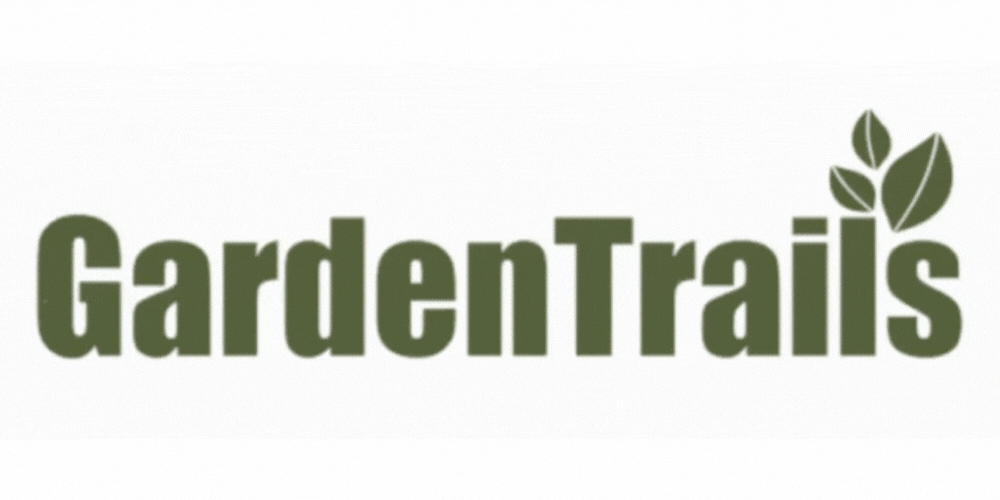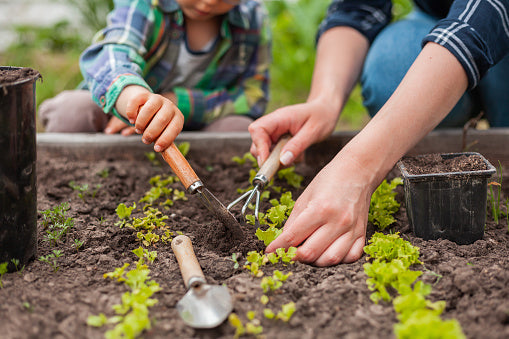Starting to build a garden can be both exciting and daunting. It all starts with a sad patch of grass and as you keep growing, it transforms into a beautiful garden with flowers, fruit trees, veggie beds, raised beds, and garden art.

Garden beautifies your home and is an excellent way to spend your time after work. If you’re new to gardening, start building your garden with these easy to follow steps:
1. Pick the right spot
It is always better to take small steps towards big wins. Pick a small space to start building your garden.
Ensure that the space you choose receives 5-6 hours of direct sunlight. Avoid a space that receives strong winds, it could knock over your young and budding plants. The wind will also keep pollinators from doing their job.
Lastly, think about the accessibility of your garden space for watering, picking, and caring for your plants. As they say, out of sight often equals out of mind.
2. Pick a type

Once you identify the right spot for your garden, the next step in your journey to gardening is choosing what type of garden you want.
Will it be a beautiful sea full of flowers, a gorgeous spread of herbs, a kitchen garden for the budding chef in you, or a nutritious vegetable garden to keep you fit and healthy? No matter what you choose, take small steps to paint the picture of your perfect garden.
3. Work on the soil
Plants always benefit from the nutrient rich gardening soil. Take your first step by examining the texture of your soil, it should be easily shovelled and crumble in your hands.
If your soil is hard and the texture is clay-like, it will be difficult for all the plants to grow their roots. If you have rocky soil, till the soil and remove the rocks.
Improving the quality of the soil is not as hard a task as you think, it comes with great benefits. Add organic compost made of tea compost, vegetable peels, to your soil to improve its quality.
4. Grab basic gardening tools

Once you have a plan in place, you’ll need some basic gardening tools to get started. We’re listing a handful of tools required for gardening. You will require:
- The must-haves: One tool that every gardener should own is a pair of pruning scissors. You will be using these to cut back plants and bushes, as well as maintain their health by cutting off the dead parts of these plants.
- Tools for digging: You will need a couple of tools for digging and preparing your soil to start planting your greens. You will need a spade, a trowel, and a garden fork. The spade and trowel are used to dig the holes for your plants, whereas the garden fork is used for breaking the large clumps of soil or for clearing the roots of old plants and weeds.
- Tools for watering: The best tools for generously watering your garden are garden hose (pipe) and a watering can. Garden hose is perfect for bigger tasks such as watering trees and larger areas. For delicate and small plants, a watering can is preferred. Your young plants cannot take the high pressure and will thank you for the gentle sprinkling.
- Tools for weeding: To tackle the weed problem and get rid of these unwanted plants, you will require a forked trowel and a gardening knife. These two handy tools will allow you to keep the invading plants away.
5. Pick your plants
Now comes the most exciting part of the gardening process - picking your greens. Before you rush to a conclusion on what to grow in your garden, take some time to study the plants.
Some plants like direct sunlight while others prefer shade. You can check your plant seed package for this information. Picking the plants that are native to your area can make your life very easy, especially when you are about to become a plant parent.
You can also take a peek at your neighbor's garden to see what plants are growing well in their garden or read our guide on which are the best vegetables to grow by month.
These methods will give you a fair idea of what type of plants will thrive in your garden.
6. Plan It Out
Before getting your hands dirty and starting to plant your greens, plan it out!
Planning: Map out where each and every plant will go, paying detailed attention to spacing. Like us, plants also need their own space. If you place young plants too close to each other, their growth can get affected, they will be more prone to diseases, or may simply die.
Labelling: We are all forgetful in nature. To ensure that you know what is planted where in your garden and to identify these plants, take some time to make small labels and place them alongside your plants. You can even get creative with your labels and come up with some unique ways to label your plants.
Organizing: Another great piece of advice for beginners is to make their own garden scrapbook and chart out the progress of the garden. You can add sketches, pictures, labels, and notes to keep a track of how each plant progressed in different parts of your garden and then make a progress report to understand the nature of these plants.
7. Garden Beds

Once you’re done with the planning, decide on the type and the size of the garden beds. Raised beds are attractive to look at and raised beds make it easier for you to work in your garden.
Gardening in blocks or beds is more convenient than gardening in single rows. Beds should be 3-4 feet across, narrow enough for you to reach the center from either side. Beds should be about 8-10 feet long, so you can easily move around without stepping on the planting area.
Start small and give each plant its own space to grow. The seeds and transplants are small but fully-grown plants can get bigger, making the area overcrowded, making it difficult for the plants to thrive.
Within the garden beds, place your greens in rows or a grid pattern. The goal is to minimize walkways and maximize the growing space. You also save time and money by only adding fertilizer and soil amendments to the planting area.
8. Plant With Care
Once you’re done with the groundwork, you need to jump in and start planting. Most of our seed packets come with basic planting instructions. Give it a try and you’ll master the art of planting as you go.
Rules of thumb for planting in your garden:
- Plant seeds about 3-4 times as deep as the diameter of the seed unless otherwise written on the packaging of the seed. Cover the seeds with the soil and water them thoroughly ensure that you do not expose the seeds.
- For transplanting the young plants growing in the pot or containers to their final spot, dig up a hole twice as wide as the root ball. Fluff up the soil and add some organic fertilizer to boost the growth of your plant. Place the root ball and cover the roots entirely with the soil. Water your plants gently after transplantation.
9. Water your plants right

The goal of watering your plants is to give them enough water to sustain but overwatering your plants can lead to waterlogging which can damage your plants.
The best way to water your plants is slowly, allowing the water to reach deep into the soil. Ideally, the soil should get moist at about 3-4 inches beneath the surface. Plants need more water in the summer heat. Read our guide on watering plants in summer for optimal plant growth in summer.
Plants at different stages of development also require different dosages of water. Young plants will need to be watered every day to encourage the growth of the plant and healthy roots, whereas developed plants will need to be watered once every 2-3 days, depending on the weather conditions.
10. Nurture with organic fertilizers
There's an old saying, “The fertilizer is the gardener's best friend.” Make your own organic fertilizer to give your plants the extra boost to grow.
Start with compost - organic material that can be added to your garden to help your plants grow. This can be anything from tea bags, grounded coffee, lawn trimmings, crushed fruit peels, etc. Adding these organic fertilizers to your soil will help it to retain moisture, stimulate good bacteria growth, and fight pests and diseases. It will also help you to reduce your carbon footprint.
11. Keep pests and diseases away
Pests and diseases are more attracted to plants that are stressed or have some deficiency. If you have healthy, well-nourished plants, your pest and disease problems should be lesser. If your plants get infected, chances are there's an organic solution.
12. Mulch may be your best bud

Depending on what plants you are growing, you may want to consider best mulch for your plants. Why, you ask? Mulch helps to feed the soil with nutrients and give protection against erosion. Mulch is any material that is spread or laid over the surface of the soil as a covering. It is used to retain moisture in the soil, keep the soil cool, suppress weeds, and make the garden bed look more attractive. As organic mulches decompose, they also help in improving the soil’s fertility.
13. Vegetable gardening for beginners

There’s absolutely nothing quite like fresh veggies coming right from your garden. The juicy, fresh, flavorful veggies which you can pluck and put right on to your plate. Every region has a different planting time based mainly on its weather, and every vegetable has its temperature preferences, too. Start with easy-to-grow vegetables like tomatoes, radishes, capsicums, herbs, and salad leaves like lettuce, kale, rocket, chillies. Once you become a gardening expert, you can move towards growing vegetables like cabbage and broccoli that require more time and effort.


1 comment
I love how this post simplifies the process of starting a garden for beginners. One thing I would add is the importance of choosing plants that are well-suited to your local climate. When I first started gardening, I struggled with this but eventually found that planting native species can make all the difference. For more advice on maintaining a thriving garden, you can visit our blog at buzzingblog Garden Tips. Great tips!